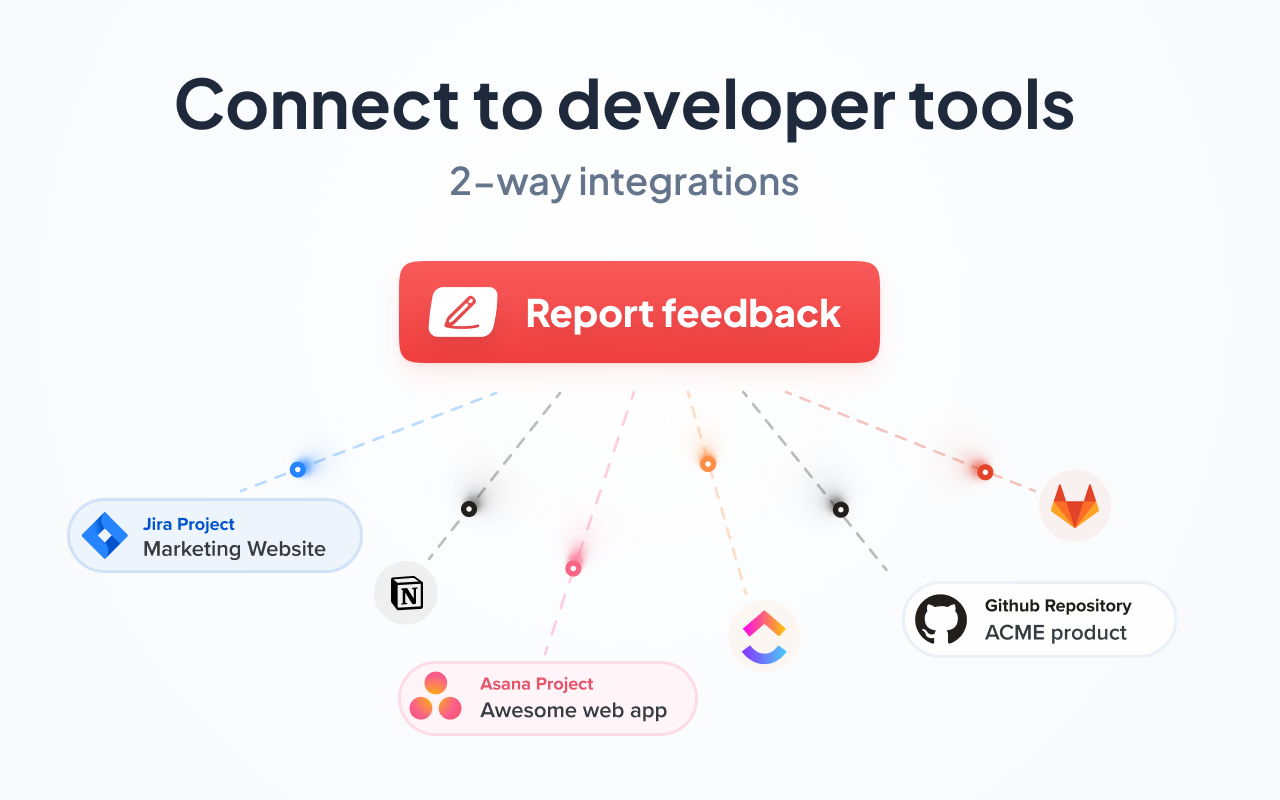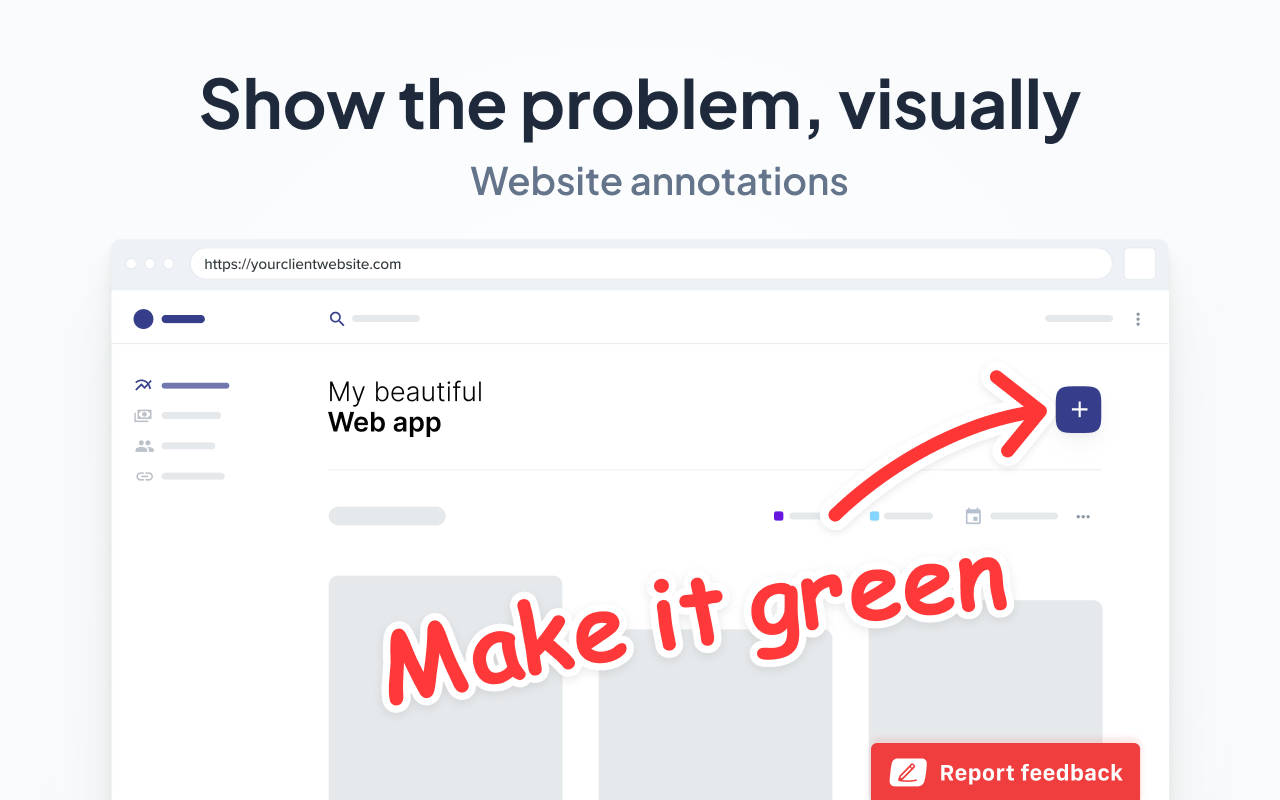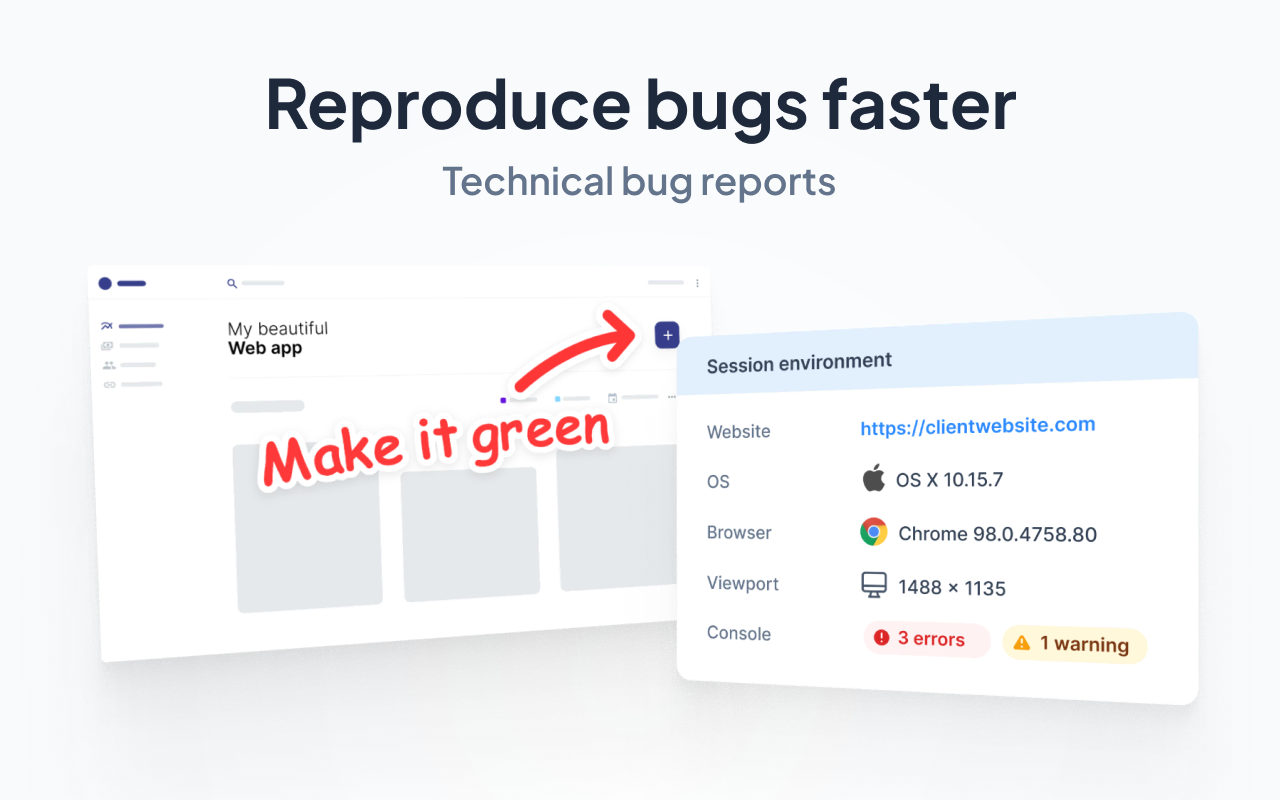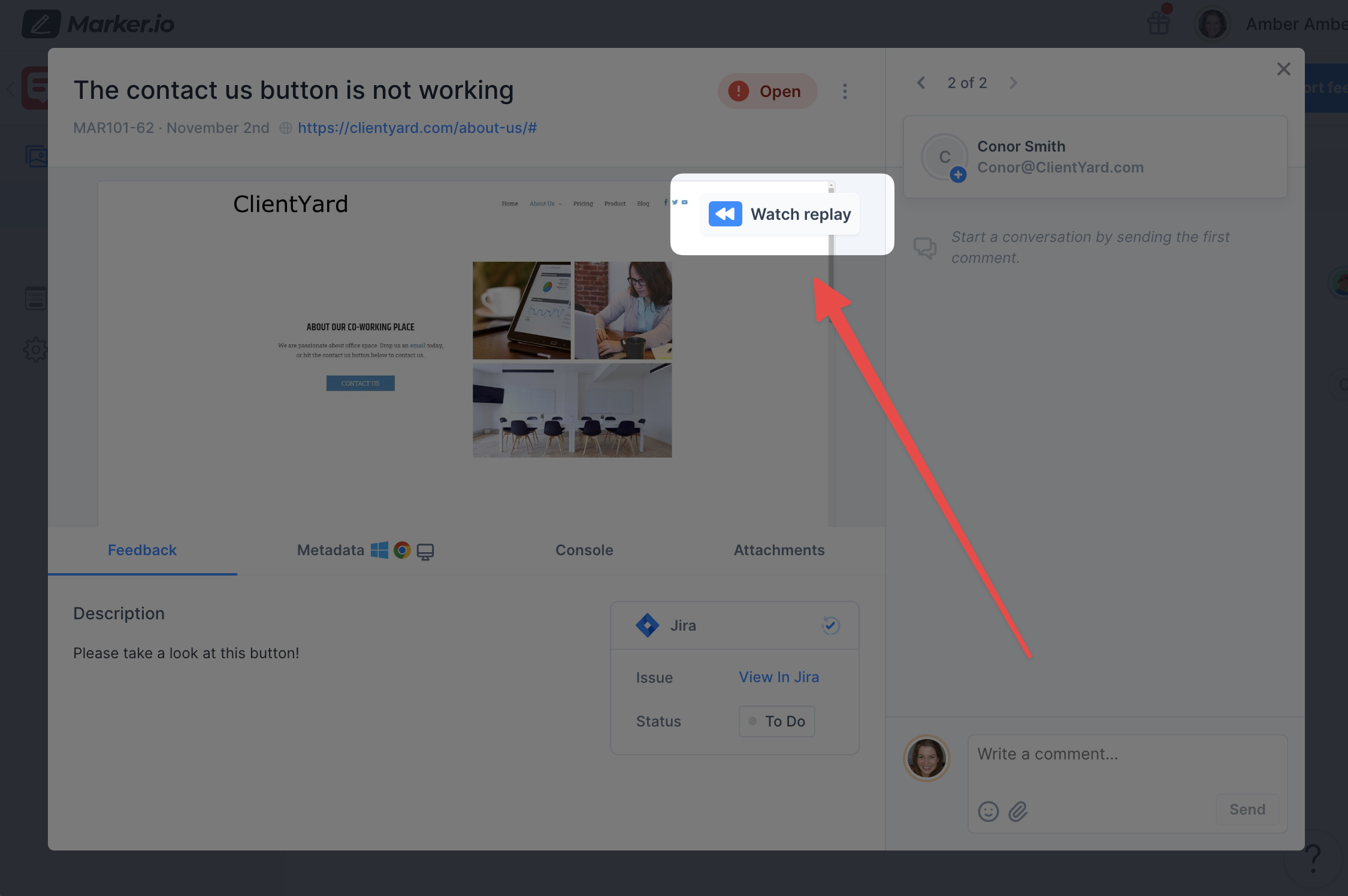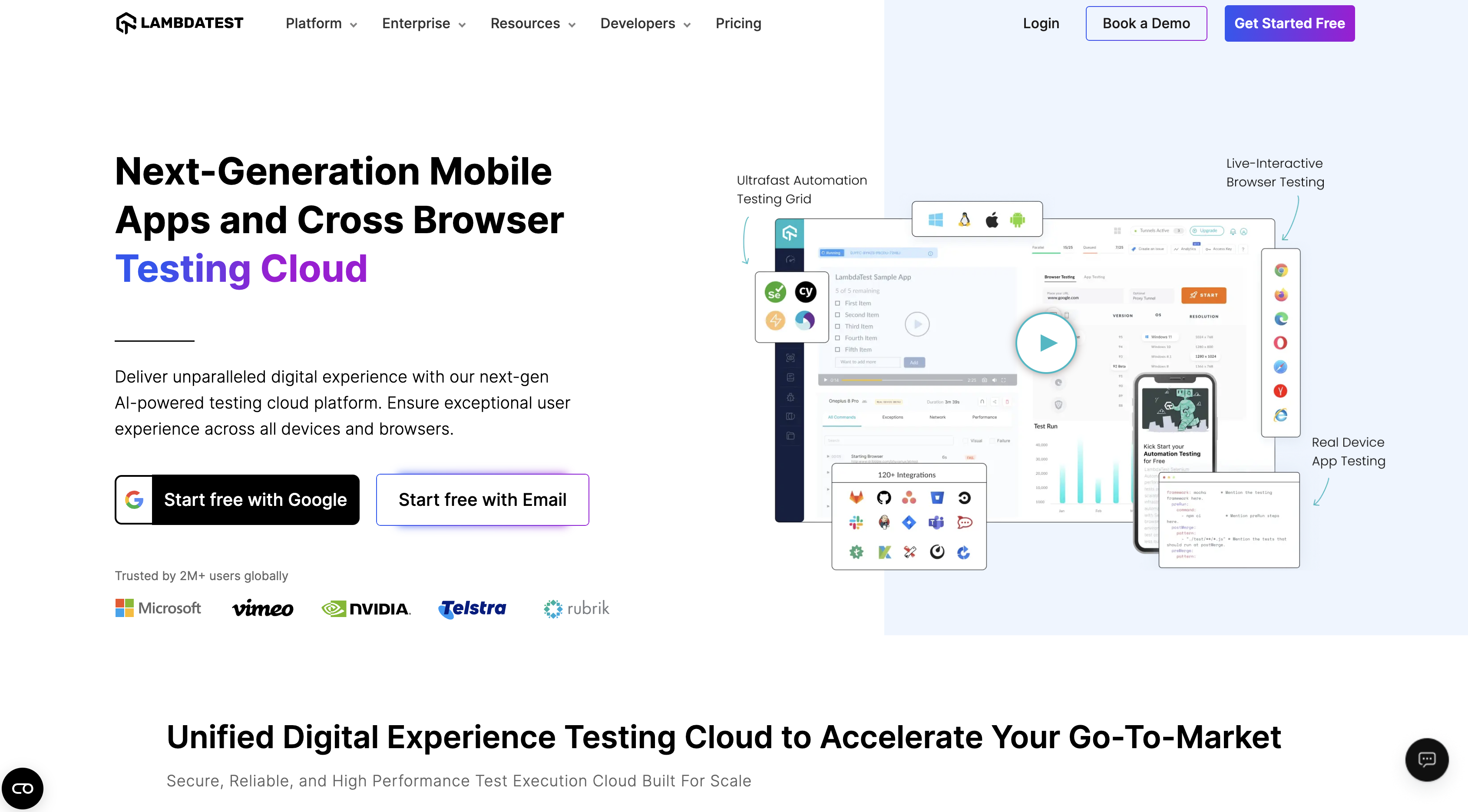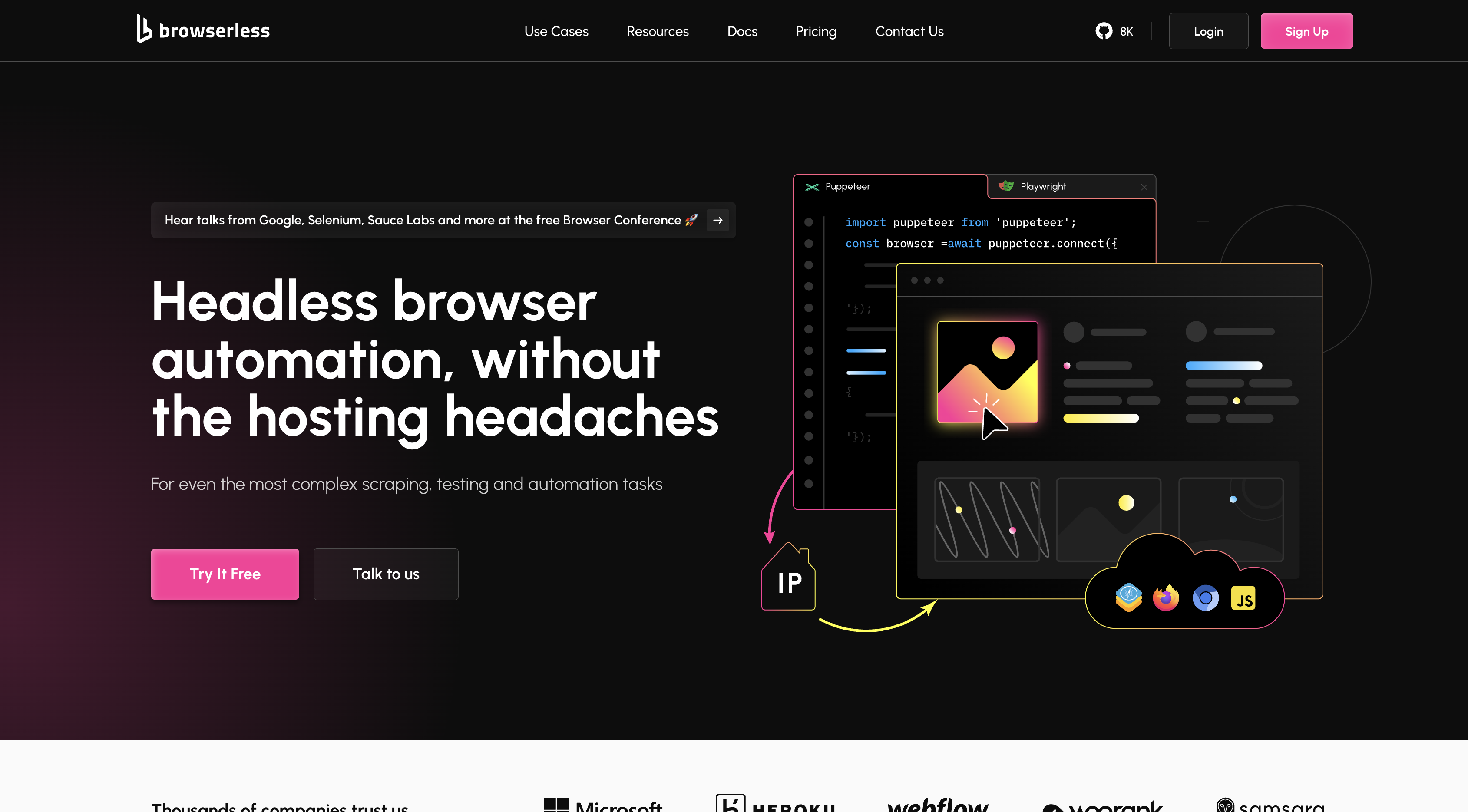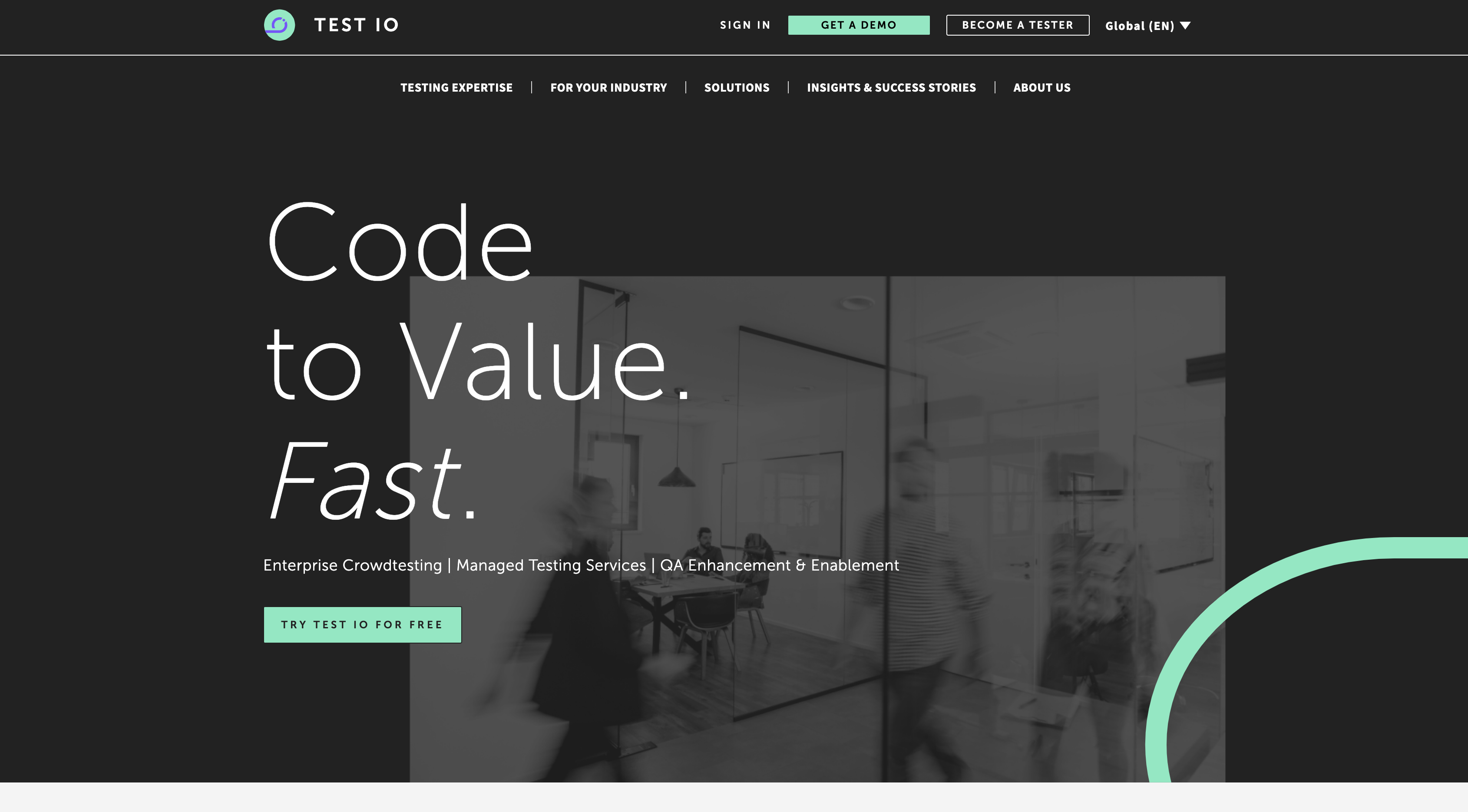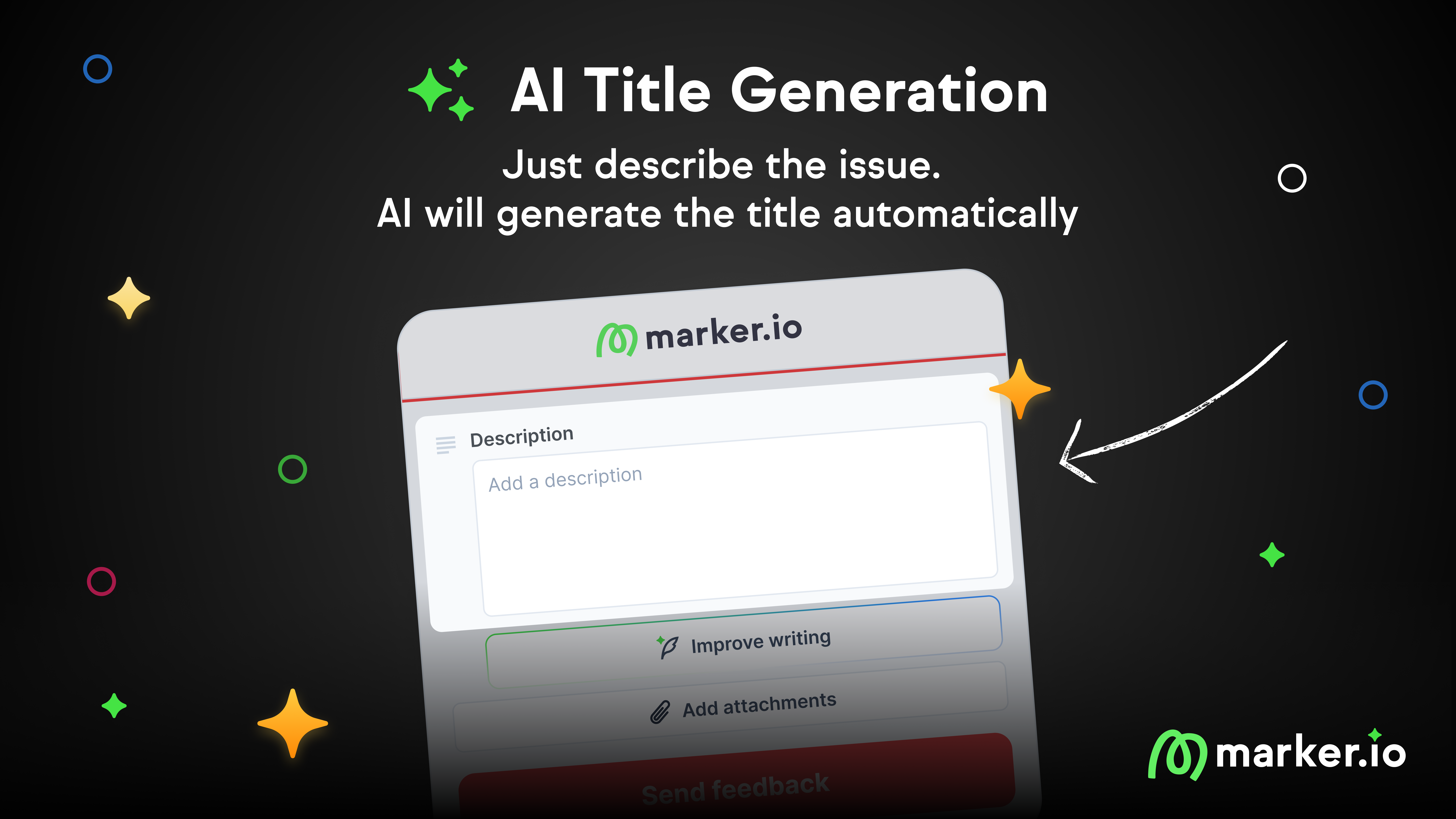12 Best Cross Browser Testing Tools in 2024
In this blog post, we go over 12 of the best cross-browser testing tools out there based on pricing, use cases, and features.
In this blog post, we go over 12 of the best cross-browser testing tools out there based on pricing, use cases, and features.
What is cross-browser testing?
Cross-browser testing is crucial for ensuring a website performs well across all browsers, devices, and operating systems.
Cross-browser testing tools make this process easier. And you can fit this during the final stages of any website development project.
We've simplified your search by comparing 12 of the best cross-browser testing tools.
Let’s dive right in.
12 Best Cross-Browser Testing Tools
Here are 12 of the best cross-browser testing tools, reviewed for their features, use cases, and pricing.
1. Marker.io
Report bugs and send feedback straight into your project management tool—from any browser.
Marker.io enhances your QA testing by automatically capturing environment details with each bug report, speeding up cross-browser testing.
Let’s look at a few other Marker.io features.
2-way PM integrations
Marker.io boasts comprehensive integrations with popular PM tools like Jira, Trello, and ClickUp.
This allows testers or clients to easily report issues with a single click through a feedback widget.
Feedback then goes straight into your PM software. No more jumping back and forth between multiple tools or searching for feedback in emails or Slack.
Developers won’t need to get used to another piece of software in their tech stack.
Issues are reported via Marker.io, developers action them in their PM tool, and updates are automatically sent to the reporter.
No more wasted time updating issue status for clients and testers!
Check it out in action:
Visual feedback with annotations
Marker.io operates as a simple, yet powerful widget on live or staging sites. It can be easily integrated with a line of code or a WordPress plugin.
Because of this, reporting issues during cross-browser testing is straightforward for everyone involved.
Let’s say you’ve got a team testing a new site on a range of devices and web browsers.
It works well on 90% of platforms, but some browser/OS combinations experience loading issues.
Your browser tester or team needs to identify which pages, browsers, and operating systems are underperforming.
Thankfully, sending a report with Marker.io is then a simple, 3-steps process:
- Find an issue, click the button
- Fill out the report and input details
- Click on “Create issue”—done!
Marker.io simplifies website debugging across different browsers with extensive visual reporting options.
- Automatic screenshots
- Annotations
- Notes
- Even emojis, and loads more!
Detailed bug reports
When you try to get feedback from your clients, it’s usually from people who aren’t tech-savvy.
Most users don’t know what developers need to fix a bug, especially if the issue is only occurring on a few browser and OS combinations.
To address this, Marker.io automatically captures the information your devs need to retrace the tester’s steps—with every report:
- Reporter name
- Source URL
- Console logs
- Environment info
- Session replay
- Any custom metadata
See the issue with session replay
As a developer, your first step upon receiving a bug report is to recreate the issue's environment.
You need to perform the same actions as the tester on the same device, browser, and operating system.
Most cross-browser testing platforms allow easy recreation of issues in virtual cloud environments.
Marker.io's bug reports provide all necessary technical data, including environment and console logs, along with visual notes from testers.
But even with all the technical data in the report—sometimes, you still need more information.
And for project managers, it’s not always possible to arrange a quick call with testers. If only you could see exactly what happened in the environment when the issue occured...
Well—Marker.io's toolkit includes session replay for that reason.
Straight from your PM tool, simply click the “Watch replay” link.
You’ll then be able to watch the last 30 seconds (or more) before the report is submitted.
Check out session replay in action:
Finally, Marker.io was not designed just for cross-browser testing.
You can use it for internal QA as well as throughout your user acceptance testing process.
Pricing: from $39/mo to $159/mo, with enterprise plan for larger companies. Start a free trial today.
2. BrowserStack
App and browser testing platform with 20k+ real devices and browsers.
Best for: Developer teams and QA engineers who need to test a website on real browsers automatically.
BrowserStack is one of the best cross browser testing tools on the market.
BrowserStack uses real devices to ensure users receive the best possible experience on your website.
Key features:
- Test web applications or websites hosted on your local machine, in the cloud, or internal network
- Integrate seamlessly with popular development and testing tools like Jira, Slack, and Jenkins
- Implement even more effective testing capabilities with new products: Test Management, Test Observability, and Accessibility Testing
Pros: Better testing websites on real browsers than using emulators and simulators. As a bonus, you can also integrate BrowserStack with Marker.io, so you get the best of both worlds!
Cons: Numerous speed issues, and somewhat lacking in features.
Alternatives: LambdaTest.
Pricing: From $39/mo (1 user).
3. Selenium
Open-source browser testing platform.
Best for: Product managers and developers needing automated environments for web browser testing.
Selenium is a test browser platform for automated cross-browser and user experience testing.
It's open-source, and therefore one of the free cross browser testing tools.
Key features:
- Use Selenium WebDriver for robust, browser-based regression automation suites and tests across different environments
- Use Selenium IDE to run and recreate bug testing scripts across different browsers and environments
- Distribute tests across a range of devices and environments with Selenium Grid
Pros: Lots of features, fairly easy to setup for experienced teams, and free.
Cons: Run time code editor not included and there is a bit of a learning curve with this product.
Alternatives: Cypress, WebDriverIO.
Pricing: Free (open-source).
4. LambdaTest
AI-based, next-generation cross-browser and app testing cloud.
Best for: QA and devs that need to test websites and apps at scale with AI-powered help.
Over 2 million users and businesses trust LambdaTest for their cross-browser website and app testing.
Key features:
- Take automated screenshots of your web application and websites during testing
- Log and track bugs, and collaborate with team members to resolve issues
- Benefit from an AI-powered testing platform to automate manual tasks
Pros: An AI-powered testing platform at scale.
Cons: Known for crashing during testing, and needs more newer mobile devices adding to the mix.
Alternatives: BrowserStack.
Pricing: Free for 1 parallel test, with more than 1 test from $19/mo.
5. Sauce Labs
Website and mobile testing platform for every stage of development.
Best for: Any developer involved in testing, QA, and continuous integration (CI/CD).
Next on our list of cross browser testing tools is SauceLabs.
Sauce Labs provides companies of every size with an extensive cloud-based testing environment.
Key features:
- Test websites, apps, and APIs on thousands of browsers and OS configurations
- Benefit from AI-driven SaaS testing solutions
- Find and fix bugs in collaboration with team members
Pros: Lots of features and solutions for every type of testing requirement.
Cons: Can be expensive as pricing is based on the number of parallel tests you need.
Alternatives: LambdaTest.
Pricing: 1 parallel test with unlimited users and minutes from $49/mo.
6. BitBar
Cloud testing platform for every device and browser you could need.
Best for: Any developer involved in testing, QA, and continuous integration (CI/CD).
BitBar is a Smart Bear testing product that includes a comprehensive testing suite.
Key features:
- Thousands of real devices, browsers, and OS configurations
- Test automation frameworks like Appium and Selenium
- Integrations into CI/CD pipelines to allow for continuous testing
Pros: As a product of Smart Bear, it belongs to a leading family of testing solutions.
Alternatives: Kobiton.
Pricing: From $47/mo.
7. Virtuoso QA
In-sprint functional UI and end-to-end testing that combines automation, AI/ML, and natural language programming.
Best for: Enterprise development teams.
Virtuoso QA focuses on maximizing automation to minimize test maintenance with browser testing.
Key features:
- Record interactions with your application or website and replay them later during your browser test
- Implement agile and shift-led testing
- Integrate Virtuoso QA with a variety of tools and software for a comprehensive testing and bug-fixing environment
Pros: Could be a great solution for large, in-house, enterprise dev teams.
Cons: Limited automation features.
Alternatives: Testim, Functionize.
Pricing: Not public, you’d need to book a demo.
8. TestGrid
Deploy real devices on-prem, in the cloud, or in a hybrid environment.
Best for: Devs and QA engineers that need a fast, automated real device and OS testing environment.
TestGrid is an end-to-end AI-powered testing suite for websites and apps.
Key features:
- Install TestOS AI/ML on-site, and TesGrid will even ship you devices as needed
- Test APIs, websites, and apps across thousands of devices and OS configurations
- Automate test cases using simple keywords and AI prompts, as it now comes with the AI-powered CoTester
Pros: Real devices now supported by AI-powered automations.
Cons: UX isn’t as great as it could be, there’s not enough documentation, or the ability to implement testing at scale.
Alternatives: BrowserStack.
Pricing: Starts with 200 free minutes per month and pro plans from $59/mo.
9. Mabl
Full-service automated testing suite.
Best for: Product and app engineering teams.
Implement cross-platform and cross-browser testing with Mabl.
Key features:
- Perform simple UI tests for websites
- Test browser performance
- Implement continuous testing for SaaS apps
- Create and manage API tests more effectively
Pros: Now benefits from AI and low-code testing solutions.
Cons: Can run slowly when tests are at scale.
Alternatives: Testim, Virtuoso QA.
Pricing: No public pricing, you’d need to get a quote or start a free trial.
10. Browserless
Headless browser automation testing.
Best for: Teams that want automated testing without the headaches.
Browserless simplifies script writing and test management for developers using tools like Puppeteer or Playwright.
Key features:
- Use Puppeteer or Playwright within the ecosystem to automate cross-browser testing.
- RAM, CPU, and GPU management prevents browsers from overusing resources, including managing zombie processes in browsers like Chrome
- You can choose your browser version, without messing with packages or dependencies
Pros: Easy to setup and use.
Alternatives: Puppeteer, Playwright (without the infrastructure).
Pricing: From $200/mo.
11. Test IO
Open-source beta testing service for SaaS and web development.
Best for: Product and app engineering teams who want real people to test a new SaaS product or website.
Test IO offers Testing-as-a-Service (TaaS) to streamline beta testing, QA, and UAT.
Key features:
- Quickly bring on a global team to test your new app or website
- Test mobile, web, and IoT apps at scale
- Access their network of over 400,000 freelance testers across 40 countries
Pros: Benefit from real people testing your new product at scale.
Cons: Can be costly depending on the team size, and freelance QA testers may lack reliability.
Alternatives: Applause, UserTesting.
Pricing: Custom, based on your needs.
12. Userbrain
User testing platform for continuous, long-term user testing.
Best for: Devs and QA engineers that need a robust user and beta testing environment.
Userbrain is a quick-setup user testing and beta testing tool.
Key features:
- Weekly user tests to gather ongoing feedback
- Simple interface for test setup
- Detailed reports, including videos and transcriptions
Pros: Lots of useful and powerful testing features.
Cons: It doesn’t come with built-in video editing tools.
Alternatives: UserTesting, Lookback.
Pricing: From $99/mo.
Frequently Asked Questions
What is cross-browser testing?
Websites need to work exactly the same on any browser, device, and OS combination.
In other words, functional websites need to be environment-agnostic.
Cross-browser testing, also called browser testing, is a critical aspect of website development, ensuring functionality across:
- Various browsers and operating systems, particularly popular ones like Chrome, Firefox, Edge, Safari, macOS, iOS, Windows, and Android.
- Different devices, ensuring websites perform well on smartphones, tablets, laptops, and desktops.
- Assistive technologies, making websites accessible to those with visual impairments or other disabilities, crucial for user experience and compliance.
What are the advantages of cross-browser testing?
Browser providers all adhere to web standards, also known as Open Web Standards or W3C standards.
However, standards interpretation and implementation vary, and the technology behind real browsers and operating systems continuously evolves.
It is up to web developers to ensure that websites function the same way regardless of the platform a user is on.
Cross-browser testing identifies and resolves browser-specific issues before a website goes live.
Without it, agencies risk losing a portion of their audience if the site fails on certain devices or browsers.
Cross-browser testing prevents this from happening.
How does cross browser testing compare to other types of testing?
Cross browser testing is typically conducted by in-house or outsourced software and quality assurance engineers.
It can be done by crowd-sourced user or beta testers, depending on how extensive your testing needs to be.
However, it doesn’t have to involve real or beta users.
It’s a type of internal testing (in some cases, even automated) before a website is launched, or before it’s given to a client or beta users for testing.
Cross-browser testing efficiently ensures a website functions properly in real-time across numerous browsers, devices, and locations.
You can achieve this through manual testing, DevOps tools, or automation tools.
Wrapping up...
We hope you’ve found this comparison of 12 cross-browser testing tools useful!
Are there other apps you’ve tried for cross-browser testing? Let us know via email or Twitter.
What should I do now?
Here are three ways you can continue your journey towards delivering bug-free websites:
Check out Marker.io and its features in action.
Read Next-Gen QA: How Companies Can Save Up To $125,000 A Year by adopting better bug reporting and resolution practices (no e-mail required).
Follow us on LinkedIn, YouTube, and X (Twitter) for bite-sized insights on all things QA testing, software development, bug resolution, and more.
Frequently Asked Questions
What is Marker.io?
Who is Marker.io for?
It’s perfect for agencies and software development teams who need to collect client and internal feedback during development, or user feedback on live websites.
How easy is it to set up?
Embed a few lines of code on your website and start collecting client feedback with screenshots, annotations & advanced technical meta-data! We also have a no-code WordPress plugin and a browser extension.
Will Marker.io slow down my website?
No, it won't.
The Marker.io script is engineered to run entirely in the background and should never cause your site to perform slowly.
Do clients need an account to send feedback?
No, anyone can submit feedback and send comments without an account.
How much does it cost?
Plans start as low as $39 per month. Each plan comes with a 15-day free trial. For more information, check out the pricing page.
Get started now
Free 15-day trial • No credit card required • Cancel anytime




